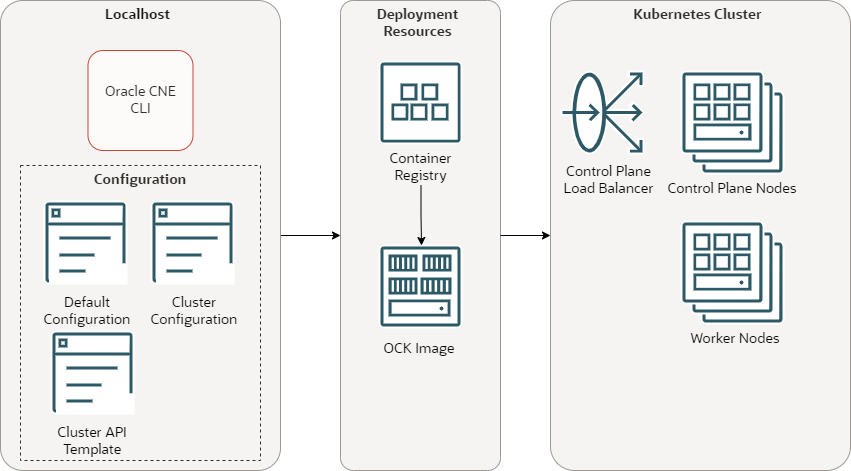CLI
Introduces the Oracle CNE Command Line Interface (CLI).
The CLI is used to create and manage Kubernetes clusters, using the available cluster providers. The CLI is installed on Oracle Linux 8, or 9. The CLI has some in-built default configuration that can be used to create a basic Kubernetes cluster, or configuration files where you can set up the cluster with the parameters and options you want for the deployment environment.
Where a cluster provider type uses the Kubernetes Cluster API, the CLI can also use Cluster API templates to define clusters to even finer specifications where a configuration option isn't available in a cluster configuration file, but is available in the Cluster API provider.
Figure 2-1 CLI Architecture

The CLI architecture has the following components:
-
CLI: The CLI used to create and manage Kubernetes clusters. The
ocnecommand. -
Default configuration: A YAML file that contains configuration for all
ocnecommands. -
Cluster configuration: A YAML file that contains configuration for a specific Kubernetes cluster.
-
Cluster API template: A YAML file that contains Cluster Resources for the Kubernetes Cluster API to create a cluster.
-
Container registry: A container registry used to pull the images used to create nodes in a Kubernetes cluster. The default is the Oracle Container Registry.
-
OCK image: The OCK image pulled from the container registry, which is used to create Kubernetes nodes.
-
Control plane load balancer: A load balancer used for High Availability (HA) of the control plane nodes. This might be the default internal load balancer, or an external one.
-
Control plane nodes: Control plane nodes in a Kubernetes cluster.
-
Worker nodes: Worker nodes in a Kubernetes cluster.